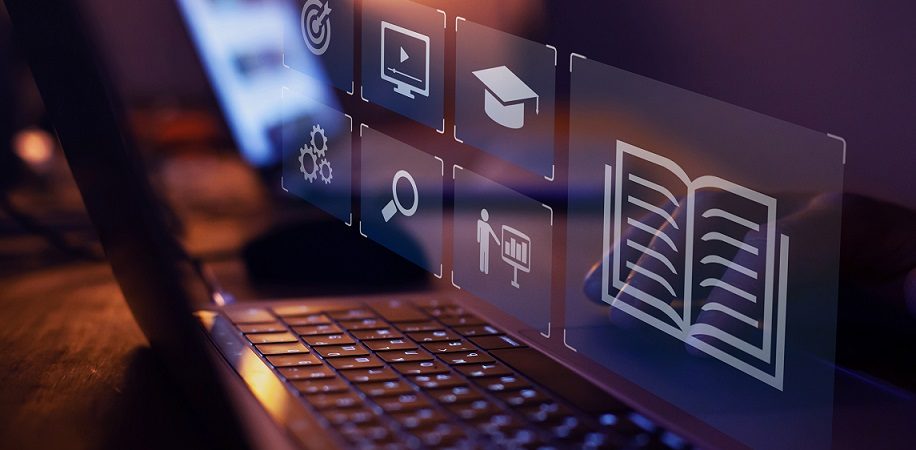Adriano Pires, Director at Embratel, highlights the challenges of teachers and students in virtual classes. According to him, the purpose of technology is to provide the best experience to users, always looking to increase productivity.

More than two years have passed since the first schools had to make extensive changes to readjust their class formats and continue to bring education to students across Brazil amid a pandemic.
With the challenge of taking care of the health of students and teachers and, at the same time, maintaining the quality of activities, schools and educators had to seek new solutions to optimize learning while the world struggled to overcome this period of extreme tension and distance caused by the COVID-19 pandemic.
The solution found was to develop a new culture of remote teaching, with more access to technology and connectivity, bringing qualified and captivating lessons and materials to the homes of students so that the school year and knowledge were not lost.
According to a survey by Inep (Instituto Nacional de Estudos e Pesquisas Educacionais Anísio Teixeira, in Portuguese), 99.3% of Brazilian basic education schools suspended all classroom activities during the pandemic, having to go digital.
More than 98% of schools have adopted non-face-to-face teaching strategies. Despite the efforts, however, school dropout was high.
The Continuous National Household Sample Survey (Pesquisa Nacional por Amostra de Domicílios Contínua, in Portuguese), about 244,000 children and teenagers between the ages of six and 14 were out of school in the second quarter of 2021, an increase of 171% over the same period in 2019, which shows the effects of the pandemic.
With this scenario now attenuated, educational institutions are taking advantage of the experience gained during this time to advance in their work, taking the hybrid format as a priority.
This format gains strength mainly through the support of technology as an ally to enable a safe and flexible digital learning environment capable of uniting quality education and interaction.
In this sense, there is a growing use of virtual teaching environments, which seek to create an innovative experience for students to feel comfortable and engaged, and above all, to continue learning, regardless of where they attend classes.
In these virtual teaching environments, students and teachers build knowledge and communication from any place and device. Interactive virtual classrooms, for example, are already capable of reproducing the face-to-face experience, with teachers focused on the diversity of content to attract their audience. Screen sharing is used like blackboards but goes further.
They allow showing images and videos to make the activities participatory even at a distance. Polls, chats and online quizzes with concepts of ‘gamification’ speak directly to young people who, in a creative phase, need stimuli to be focused.
The games used in this environment stimulate analytical vision, concentration and knowledge of the subjects studied while making the act of learning more fun and collaborative.
For teachers, therefore, uniting technology and education means the emergence of new opportunities to offer teaching methodologies that are more focused on the context of students, who are already in an increasingly connected society.
It also represents the chance to enhance pedagogical practices through access to statistics and data provided by the tool.
An intuitive and easy-to-use platform becomes a great ally of educators, facilitating and optimizing the academic monitoring of classes.
Correcting exercises, sending feedback, closely monitoring learning, activities performed, engagement and attendance, all online, allows for highly personalized service according to personal affinities, skills and difficulties.
The purpose of technology is to provide the best experience to its users, always looking to increase productivity. In education, this is no different. Technological solutions offer meaningful opportunities for innovation regarding relating and making learning more productive.
The last two years have been proof that technology and education must go hand in hand.
In-person and distance learning complement each other as never before to meet the demands imposed by this new world, supporting the development of education and bringing students closer to the educational system, something of extreme importance for the future of Brazil.
The use of virtual learning environments is already a reality in many institutions and will be even more so in the post-COVID era to reinforce in-person classes and expand the hybrid study.
The transformation potential of new technologies in this area is extensive, with a capacity to fill gaps and increase the entry and permanence of young people in schools, in addition to making learning more collaborative and inspiring.
The union of traditional teaching with the new digital environment must be prioritized for Brazil to reach its full potential and become an effectively developed nation, expanding the flow of knowledge, stimulating socialization, creativity and social belonging to not only retain students in school but, mainly, to prepare them for the future with a differentiated and attractive education.
It is time for educational organizations to understand the importance of keeping technology as a fundamental partner in the learning process to really make students into citizens and protagonists of the society we dream of for our children.


